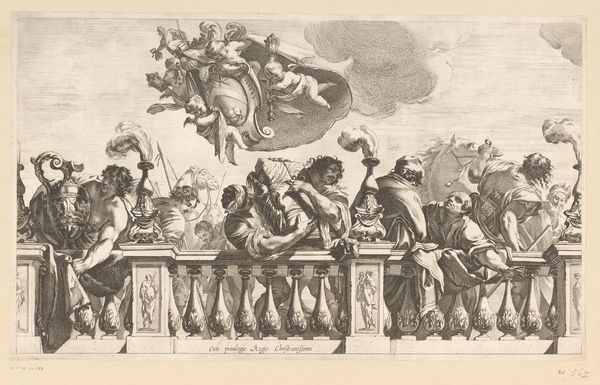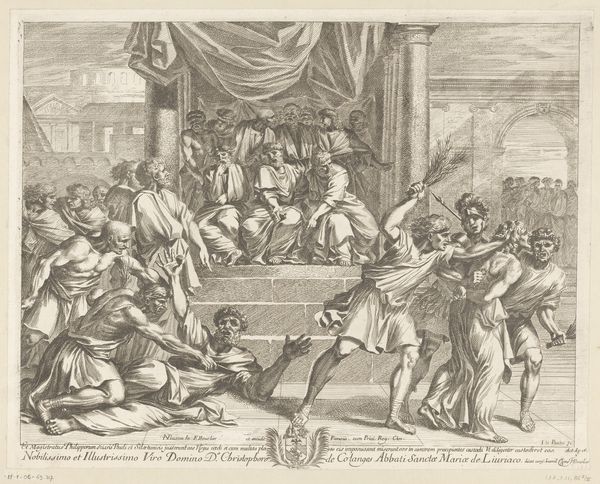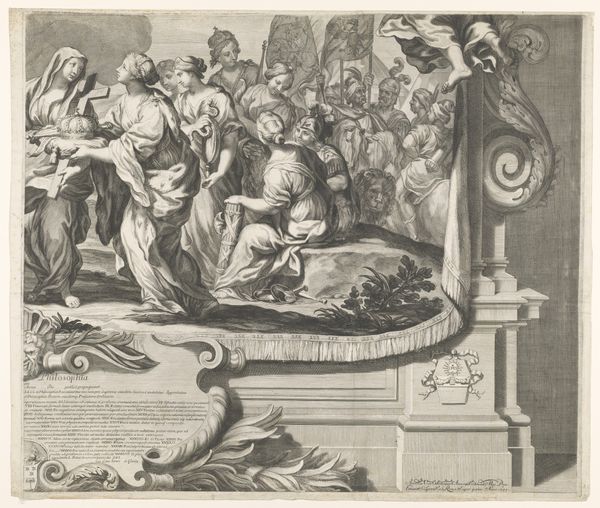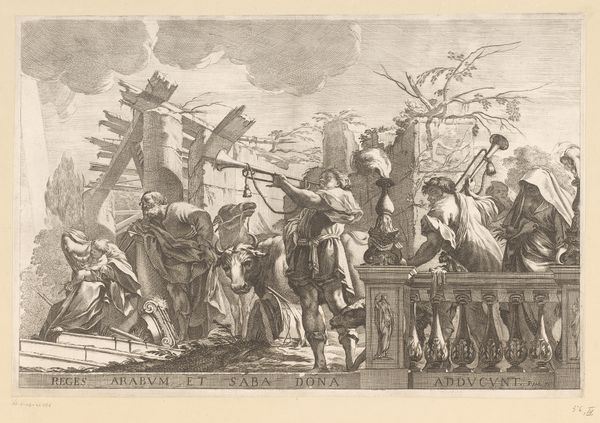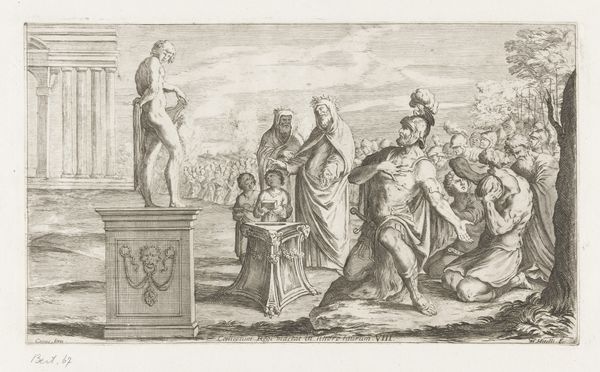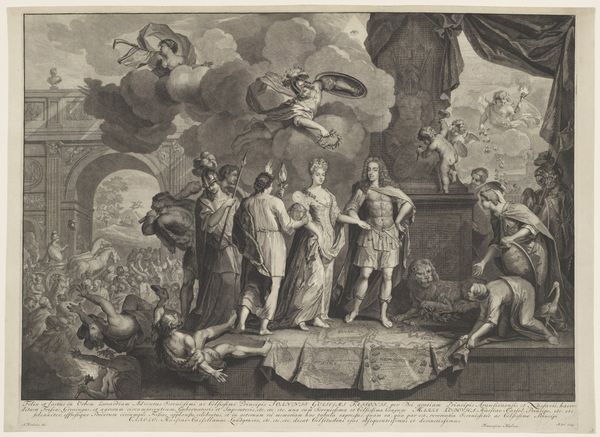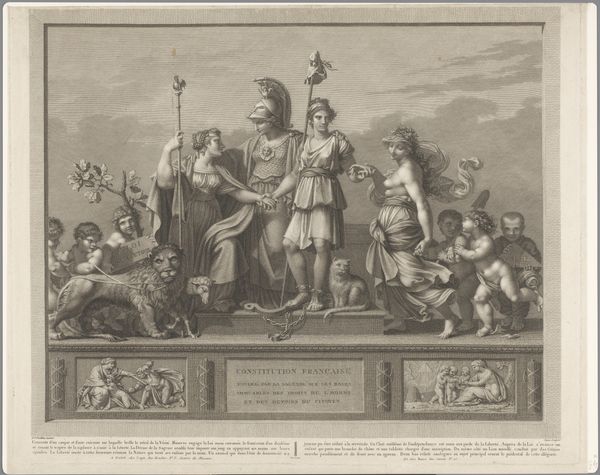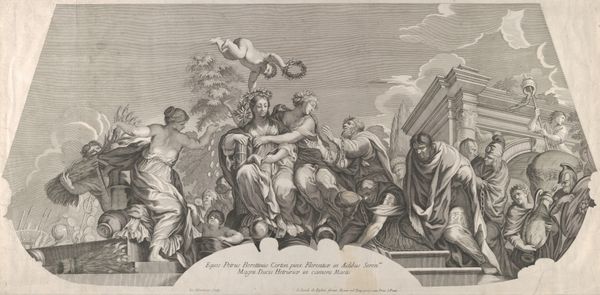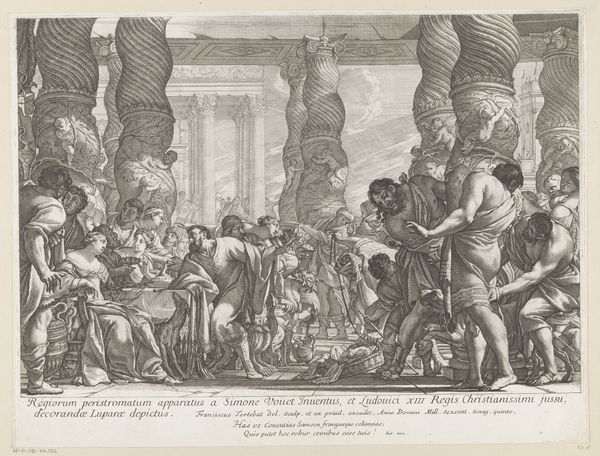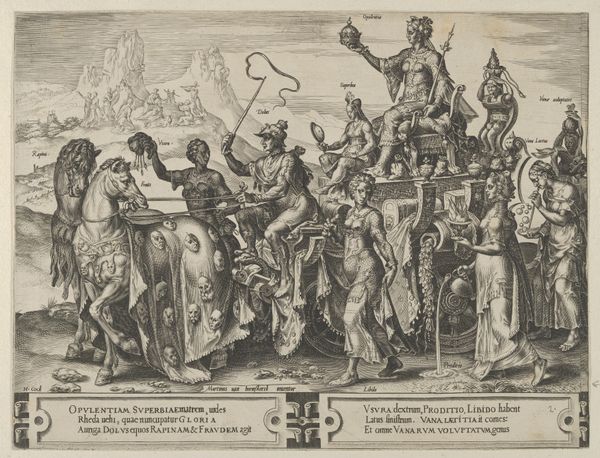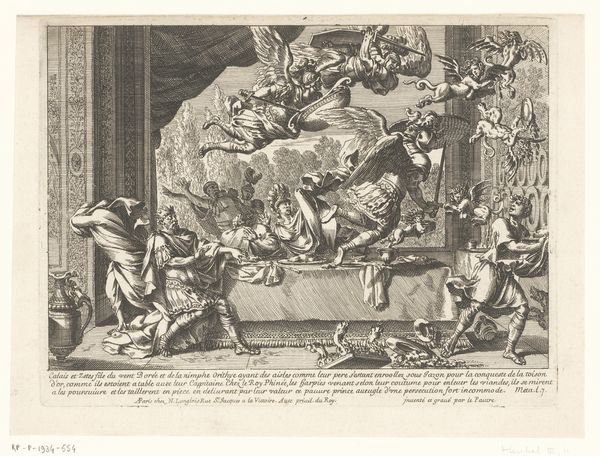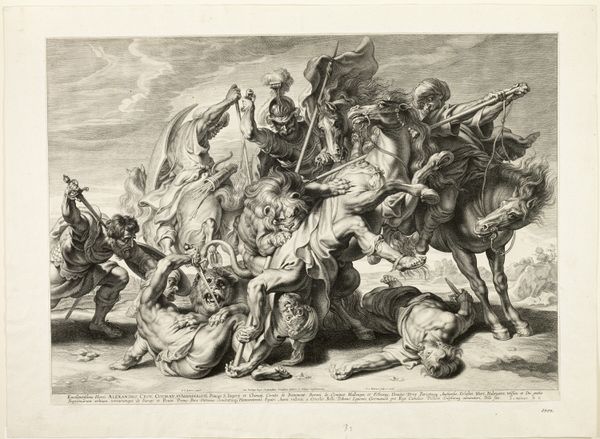
print, engraving
#
baroque
# print
#
old engraving style
#
figuration
#
history-painting
#
engraving
Dimensions: height 321 mm, width 545 mm
Copyright: Rijks Museum: Open Domain
Curator: Here we have Michel Dorigny’s “Adoration by the Kings,” an engraving from 1638, showcasing a classic baroque sensibility. Editor: It has an undeniable gravity, a solemn processional unfolding before us. The figures lean heavily forward, an overwhelming weight of purpose. Curator: The artwork, of course, depicts the biblical scene where the three kings or Magi pay homage to the infant Jesus. But let’s consider the historical backdrop— the print was created during a period of intense religious and political upheaval in Europe. These prints served not merely as devotional items, but as potent reminders of religious authority and continuity. Editor: Observe the recurring motifs; the horses, symbols of power and royalty, are strategically positioned to underscore the authority of the Kings and, by extension, the divine significance of the event. The torches create these incredible visual cues suggesting sacred illumination. Curator: Precisely! Dorigny strategically uses established visual cues in the Baroque era that signaled authority and divine blessing, a visual rhetoric embraced by the Church. Look at the architectural details, the heavy stone and classical motifs that project stability and endurance. Editor: But is this merely a representation of faith? Consider how the act of adoration is emphasized; bodies literally prostrate themselves, overwhelmed in deference. There’s more than meets the eye: we're asked to confront human insignificance before divine authority. Curator: In examining Dorigny’s context, printmaking allowed this imagery to reach wider audiences. It was critical to reaffirm Catholic orthodoxy, particularly in regions experiencing Protestant reformation. Art became a very potent tool within the religious and political arena of the 17th century. Editor: Dorigny crafted much more than a devotional image; his composition operates as a cultural mnemonic, solidifying and disseminating certain religious principles and their historical and social weight within the context of European society at that time. Curator: Seeing the Adoration in light of its historical place makes it abundantly clear just how charged and purposeful an artistic representation can be within an ideological movement. Editor: Indeed, tracing the symbolic narrative with how it corresponds to those social realities shows that artwork carries historical consciousness into our own perception.
Comments
No comments
Be the first to comment and join the conversation on the ultimate creative platform.
